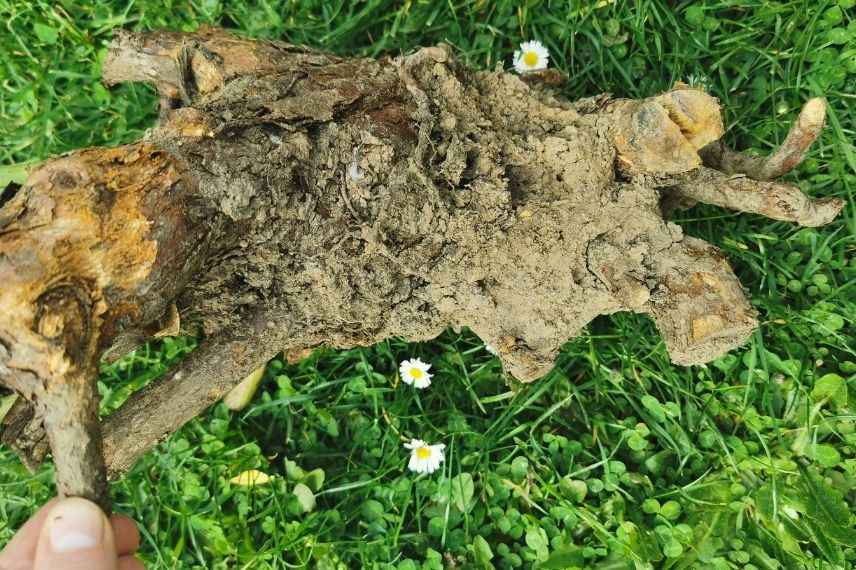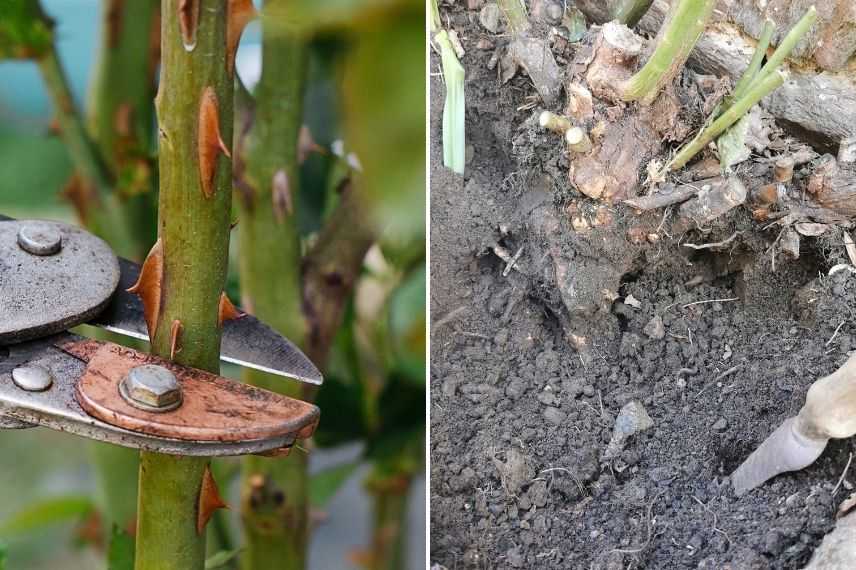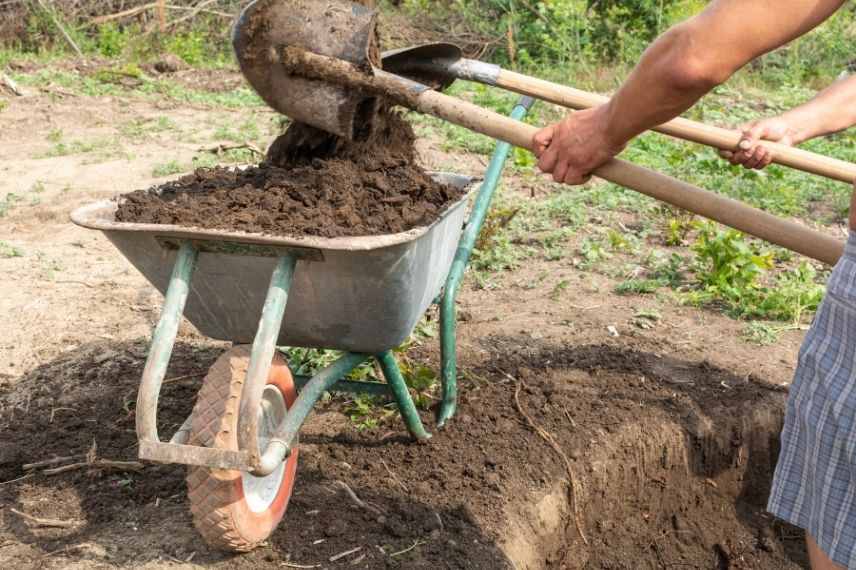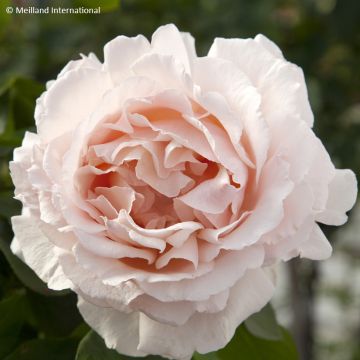
How to remove an old rose bush?
Our tips for successfully uprooting a tired rose bush
Contents
Cultivated under good conditions, roses can live long in a bed, at least fifteen years. Despite this longevity, there comes a time when they gradually weaken and decline. Often, roses exhibit old wood, the development of shoots is reduced and flowering is less abundant. While it is entirely possible to prune an old rose to rejuvenate it, in some cases, the chances of producing new shoots after pruning are not guaranteed. It may then be time to consider removing your old rose. Whether it’s a dwarf, bush, standard, climbing, or liana rose, discover all our tips for successfully removing your aged rose without chemicals, in harmony with nature and the soil.
When is the best time of year to uproot an old rose bush?
The best time to remove your old rose bush from the garden is autumn-winter. Between November and February, the soil is particularly moist, which facilitates root extraction. Of course, if the soil is frozen, this operation is not possible.

Roots of an old rose bush (©Virginie Douce)
What equipment to use?
Put on special gloves to handle your rose bush (brush clearing gloves for roses and thorny plants with cuffs, for example). Depending on the size of the rose bush to be removed, you will need additional protective gear. Indeed, if you wish to uproot a climbing rose or rambling rose, wear suitable clothing that covers your arms and legs, as well as a pair of safety glasses. Remember that you can contract tetanus while gardening.
Various tools can be useful for digging up the roots: dibber, spade, weeding knife, fork or spading fork, pruning shear, loppers, or axe.
To learn more, check our advice sheet: Tetanus: gardeners, don’t miss your booster jab!
Discover other Roses
View all →Available in 0 sizes
Available in 2 sizes
Available in 1 sizes
Available in 2 sizes
Available in 2 sizes
Available in 2 sizes
Available in 3 sizes
Available in 2 sizes
How to remove an old rose bush?
Manually uprooting a rose bush requires a lot of energy and attention, especially if you are using cutting tools. The vigorous and robust roots of rose bushes grow deep into the soil, sometimes up to 1 metre deep. Due to this rooting, uprooting the rose bush can be a long and tedious task. Here are the steps to follow:
- The day before extracting the rose bush, ensure the soil is moist. Water generously if needed.
- On the day itself, you can cut back the foliage of your old rose bush to avoid being hindered by the branches. Prune the stems to 20-30 centimetres above the ground.
- Remove the mulch.
- Using a spade or fork, loosen the surface of the soil (15 cm deep) in an area about 50 centimetres in diameter all around the plant.
- Shovel away the surface soil.
- Next, dig gradually with a trowel or weeding knife along the roots to progressively clear the root system as deeply as possible.
- The ideal is to remove all the roots from the soil. If it is not possible to extract the roots in their entirety, cut them as far away from the root ball as possible. Use pruning shears or loppers, or even an axe to sever the larger roots.

First, cut back your rose bush. Then, work the surface of the soil with the spade. Next, gradually clear the longest roots using a trowel or weeding knife.
Remove the soil as you go. There’s no need to pull on the rose bush; you will tire yourself out more than anything. Once your rose bush is uprooted, fill in the hole and regularly top up the soil until your ground is perfectly level.
Cut the plant waste (especially the main branches) into small sections and place them in a large container (bucket, bin, plant container) to facilitate disposal. You can then take everything to another part of the garden (where there are no rose bushes) or to the waste disposal site.
Read also
Pruning rosesCan you replant another rosebush in its place?
Replanting a rose bush in a spot previously occupied by another rose bush is a risky gamble. Indeed, the root of the rose bush secretes harmful substances for new rose plants into the soil. These phytotoxins act like poison, limiting the growth of other plants, even if they are another rose bush. Furthermore, fungal diseases can develop on the root fragments left in the soil, potentially contaminating the new roses. Finally, after many years, the soil becomes depleted and lacks nutrients. Some specialists estimate that this area is unusable for 5 to 8 years. Here are the different options available and our advice to maximise your chances of success:
- First solution: quarantine the area for several years. Fill in the planting hole of your old rose bush and wait at least 5 years before replanting a rose bush in that spot. Plant your new young roses elsewhere in the garden.
- Second solution: if you still wish to replant a rose bush in this space, replace the soil to a depth of at least 50 centimetres and a diameter of 60 centimetres around the planting hole of the old rose bush. If necessary, use a pickaxe to loosen the soil and make the job easier. For the soil replacement, use good garden soil free from any treatment residues, sourced from another part of the garden, or quality potting soil. Before planting your new rose bush, enrich the new soil with an organic amendment (well-decomposed compost, ground horn). An addition of mycorrhiza can also be beneficial.

To plant a young rose bush in this spot, it is essential to replace the soil
For further reading
Discover our advice sheet on Transplanting trees, bushes, roses, and perennials: when and how?
Check out our various sheets on rose pruning and learn when and how to prune:
- a standard or weeping rose,
- a groundcover rose,
- repeat flowering roses,
- bush and shrub roses,
- climbing roses,
- old garden roses.
Find our growing tips for roses in cold climates:
- Subscribe!
- Contents










































Comments